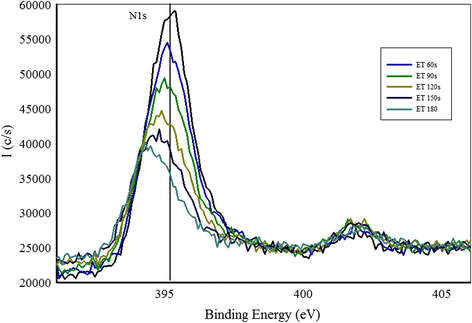
The thickness and the concentrations of Ag in the nanocomposite thin film were revealed by RBS. The composition of Ag was varied from 0 to 45 at.%. Quantitative Analysis and Data Processing: sensitivity factors, ionization cross section, asymmetry parameter, analyzer transmission, intensities, background subtraction, satellite subtraction, detection limit, effect of thin overlayers, peak area, lineshapes, curve fitting, deconvolution.ĭepth Profiling: non-destructive and destructive methods, angle resolved XPS, elastic and inelastic scattering, sputtering, sputtering depth calibration.Īpplications: some further examples of applications of XPSĪdvance Data Processing: coverage calculation, thin film thickness calculation.Nanocomposite thin films of Ag nanoparticles in TiO 2 matrices were synthesised by RF magnetron co-sputtering and characterised by X-ray diffraction (XRD), Rutherford back scattering (RBS) spectrometry, UV–Vis, high-resolution transmission electron microscopy (HR-TEM) and X-ray photoelectron spectroscopy (XPS). Auger parameter, peak widths, line shapes. Qualitative Analysis: Identification of elements, changing x-ray sources, charging correction and reference lines, jnterpretation of chemical shift, relaxation effects. Instrumentation: X-ray anodes, monochromatic radiation, electron energy analyzers, energy resolution, spectrum acquisition, energy scale calibration, electron detectors, small area analysis, imaging XPS, vacuum system, samples and sample handling.Īrtifacts: radioactive and thermal damage, charging, methods for charge control, ghost peaks. Auger process, valence spectra, handbooks, books, surface sensitivity, information depth and attention length, spin-orbit splitting, chemical shift, plasmons, multiplet splitting, shake-up, handbooks and helpful references will be recommended. The Principles of XPS: production of photoelectrons, electronic configuration of atoms and molecules, energy, spectra, peak labeling. Introduction: terminology, surfaces, types of surfaces. The course will teach how and what information can be provided by XPS. XPS is widely used to determine the chemical composition of a surface (element concentrations, chemical states, lateral and depth distributions, etc.) Nowadays XPS has become a standard technique for the characterization of solid surface. 'Advanced data analysis: coverage calculation, thin film thickness calculation, etc.

'Learn the types of problems that can be solved with XPS examples 'Learn approaches for qualitative and quantitative analysis of XPS data. 'Learn about the analysis of surfaces with XPS and limitations of the technique.

'Learn physics principles of X-ray Photoelectron Spectroscopy (XPS)


 0 kommentar(er)
0 kommentar(er)
